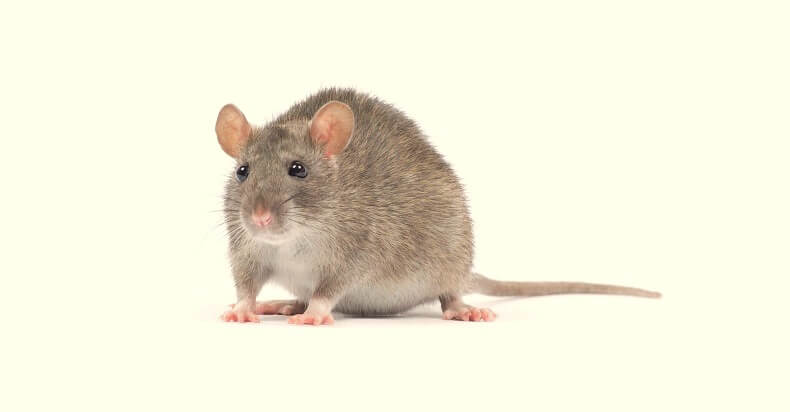Diphacinone Rodenticide Review

Household pests like rats and mice are more than just a nuisance – they can cause damage to property, contaminate food sources, and even spread diseases. As homeowners and businesses search for practical solutions, one popular option that frequently comes up is the use of rodenticides.
Among the various rodenticides available in the market, Diphacinone stands out. This article delves deep into the world of Diphacinone, its mechanism, safety precautions, and efficacy.
Diphacinone Rodenticide Overview
| Feature | Detail |
|---|---|
| Chemical Type | First-generation anticoagulant |
| Mechanism of Action | Inhibits vitamin K1 recycling |
| Target Pests | Rats, mice, and other rodents |
| Lethal Dosage | Multiple feedings over several days |
| Primary Use | Control of rodent pests in agriculture and urban areas |
| Hazards | Harmful to non-target species (pets, wildlife) |
| Symptoms of Poisoning | Internal bleeding, fatigue, difficulty breathing, pale gums |
Diphacinone Products
Diphacinone stands out as a leading active ingredient in a plethora of rodenticide products, designed meticulously to control and eliminate rat and mouse infestations. Below, we shed light on some renowned products embedded with Diphacinone and dissect their distinct usages:
1. Eratication Rodent Bait
- Form: Bait block
- Concentration: Typically 0.005% Diphacinone
- Usage: Partnered with bait stations, Eratication aims to attract and exterminate rodents. Conveniently, it comes with pre-drilled holes ensuring easy placement on bait station rods.
2. Ramik Green Rodenticide
- Form: Nuggets/Pellets
- Concentration: Diphacinone as the principal ingredient.
- Usage: Perfect for both interiors and exteriors. Its green pellets, resistant to weather, are notably potent in areas marred by wetness and dampness.
3. Just One Bite II Bar
- Form: Bait bar
- Concentration: Contains Diphacinone.
- Usage: Exemplary in combating warfarin-resistant Norway rats. Designed to be split into two oz portions, they fit seamlessly into standard bait stations.
4. Ditrac All-Weather Blox
- Form: Bait blocks
- Concentration: Enriched with Diphacinone.
- Usage: These universal blocks flaunt versatility, delivering commendable performance irrespective of conditions – whether it’s wet, dry, indoors, or outdoors.
5. Tomcat All-Weather Bait Chunx
- Form: Bait chunks
- Concentration: Diphacinone as an active agent.
- Usage: Renowned for yielding results even in scenarios with rampant infestation. Its resistance to mold and moisture makes it a prime choice for outdoor locales.
6. Hawk Bait Chunx
- Form: Bait chunks
- Concentration: Infused with Diphacinone.
- Usage: Tailored for large-scale infestations. Being a single-feed bait, it promises faster results.
7. Neogen Rodenticide Havoc Mouse and Rat Killer
- Form: Pellets
- Concentration: Packed with Diphacinone.
- Usage: These user-friendly place packs cater to every kind of infested setting.
8. Prozap Rodent Pellets
- Form: Pellets
- Concentration: Rooted in Diphacinone.
- Usage: The ease of scattering these pellets in infested zones makes them an efficient tool in the rodent control arsenal.
With the plethora of options available, choosing the right product becomes paramount. Always ensure that while Diphacinone is efficient, safety measures are followed to prevent any unintended harm.

What is Diphacinone?
Diphacinone is an anticoagulant rodenticide, which means it works by interfering with the blood-clotting mechanisms of rodents.
It falls under the first-generation anticoagulants, which require multiple feedings by rodents to be lethal. Today, it is incorporated in various products and presented in diverse forms – blocks, cakes, and pellets.
Mechanism of Action
When rodents ingest Diphacinone, it inhibits Vitamin K1, a crucial factor in blood clotting. As the rodent continues to consume the poison over several days, its body is depleted of Vitamin K1, leading to uncontrolled bleeding and ultimately death.
The delayed action is beneficial because it does not cause immediate suspicion among the rodent population, ensuring more of them consume the poison.
Advantages
- Palatability: Diphacinone has been regarded as one of the most palatable types of anticoagulant rodenticides. This ensures that rodents are attracted to the bait instead of avoiding it.
- Combat Bait Shyness: Since Diphacinone takes time to show its deadly effects, rodents don’t associate the bait with danger. This reduces the chances of bait shyness.
- Low Risk of Secondary Poisoning: Being an FGAR, Diphacinone breaks down swiftly inside the rodent’s body. This minimizes the risk of secondary poisoning if another animal consumes a deceased rodent that ate the bait.
Drawbacks
The main disadvantage of using Diphacinone is the need for rodents to consume substantial bait amounts continuously. Since the lethal dosage is achieved over multiple feedings across days, there’s always a risk of rodents losing interest or seeking alternative food sources.

Safety
Like any potent solution, safety is paramount. Solutions Pest & Lawn, among other suppliers, ensures that products containing Diphacinone are paired with Rat & Mouse Bait Stations.
These stations are tamper-proof, designed to keep non-target animals, children, and pets safe. Handling such products with care, adhering to guidelines, and using personal protective equipment is crucial.
User Experience
Once a rodent consumes the bait, it absorbs Diphacinone, interfering with the liver functions and blood clotting processes. Typically, rodents will die from complications related to blood loss in a few days.
If products like Eradication Rodent Bait are used, one can expect to notice a significant decline in rodent activity within a week.
Conclusion
Diphacinone rodenticide provides an effective solution for those battling rodent infestations. It’s vital, however, to use it responsibly, keeping in mind its potential effects on non-target species.
As with all rodenticides, following all safety precautions and usage guidelines is crucial to achieve the best results while minimizing risks. If you are unsure about using Diphacinone or any other rodenticide, consult a professional pest controller to ensure a safe and effective rodent management strategy.

James E. Butkovich, Pest control maven with a knack for eco-friendly & Chemical solutions. Blogger with a mission to make homes pest-free, one post at a time.